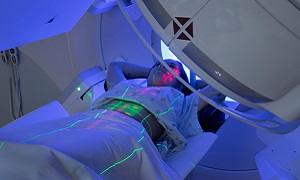Best Doctors in India for Glioblastoma treatment
Best Hospitals in India for Glioblastoma treatment
Reliance Hospital, Mumbai
- City: Mumbai, India
Hospital Highlights:
- Reliance Hospital is one of the best super-specialty care hospitals in Navi Mumbai.
- The main purpose of this hospital is to become a trustworthy place for the best health and hope for society. The hospital is well connected to the suburbs of Mumbai and Navi Mumbai.
- The hospital has various specialty departments, viz., Accident & Emergency, Anesthesiology, Dental Services, Dermatology, Diabetology, Dietetics Nutrition, Endocrinology, ENT, Gastroenterology, General Surgery, Gynaecology And Obstetrics, Hepato Pancreato Biliary Surgery, Infectious Disease, Internal Medicine, Interventional Radiology, Laboratory Medicine, Minimal Access Laparoscopic Surgery, Nephrology, Neurosciences, Opthalmology, Orthopaedics, Paediatrics, Pain Management Palliative Care, Physical Medicine Rehabilitation, Plastic And Reconstructive Surgery, Psychiatry, Pulmonary Medicine, Radiology, Rheumatology, Transplant, Urology Andrology, Vascular Surgery
Lilavati Hospital & Research Centre, Mumbai
- City: Mumbai, India
Hospital Highlights:
- Lilavati Hospital & Research Centre is India’s premier multi-speciality tertiary care hospital and has been recognised as a global medical excellence centre.
- Lilavati Hospital & Research Centre has built an unrivalled level of trust with its patients over the years, thanks to a solid foundation that comprises cutting-edge facilities, the best medical competence, research, education, and charity endeavours.
- The hospital is quite proud of the fact that it now serves patients from all kinds of backgrounds, not just from the United States but from all around the world.
- The hospital has a total of 323 beds, one of the largest Intensive Care Units (ICUs), 12 Operation Theatres with modern amenities, over 300 consultants, and almost 1,800 personnel.
Venkateshwar Hospital, Dwarka, New Delhi
- City: New Delhi, India
Hospital Highlights:
- State-of-the-art technology and devoted healthcare professionals have been brought together under one roof at Venkateshwar Hospital to provide genuine medical care. The hospital’s professionals work together as a team to deliver the best possible treatment to their patients, using the most sophisticated equipment and information technology.
- Venkateshwar Hospital’s mission is to attain global excellence in healthcare by employing evidence-based, ethical clinical practices and cutting-edge technology by a team of highly skilled experts.
Glioblastoma
Glioblastoma is an aggressive tumor occurring in the brain or the spinal cord. It forms from astrocytes (star-shaped cells) that support the nerve cells. Although this type of cancer can occur to people of any age, it is more common in elderly people. Another name for the disease is Glioblastoma multiforme. This malignant brain tumor spreads fast and grows quickly. This cancer begins in the cerebrum, which is the largest part of the brain, in adults. The tumor makes its own blood supply which helps in its growth. It easily invades the normal tissues of the brain. One may observe a slight male predilection.
Types of Glioblastoma
Glioblastoma is of two types. They are:
- Primary Glioblastoma: It is the more common type and the most aggressive form of Glioblastoma.
- Secondary Glioblastoma: It grows slowly and is less common. It begins from a less aggressive astrocytoma. Affecting nearly 10 % of people, most of the affected people are under the age of 45 years.
Causes of Glioblastoma
The exact cause of Glioblastoma is still unknown. Similar to other cancers, it begins when there is an uncontrolled growth of the cells and leads to tumors. However, this cell growth relates to the changes in the genes of your body.
Symptoms of Glioblastoma
When Glioblastoma presses on the parts of your brain, it may give rise to symptoms. You won’t have any symptoms if the tumor isn’t very large. The location of the tumor within your brain is largely responsible for determining the type of symptoms that you will face. These symptoms can be:
- Nausea
- Memory loss
- Muscle weakness
- Headache
- Weakness on a side of your body
- Mood changes
- Double vision
- Seizures
- Sleepiness
- Problems with speech
- Vomiting
- Personality changes
- Loss of appetite
- Blurred vision
Diagnosis of Glioblastoma
Neurological examination
During neurological examination, your doctor will ask you about the signs and symptoms during the neurological examination. He or she may inspect your hearing, coordination, reflexes, vision, balance and strength. If you are having problems in any of these, then it will reveal the part of your brain affected by the tumor.
Imaging tests
Imaging tests will help your doctor to determine the size and location of the tumor within your brain. He or she may use MRI (Magnetic Resonance Imaging), CT (Computerized Tomography) scans, and PET (Positron Emission Tomography) to diagnose the tumor.
Biopsy
Biopsy involves the removal of a sample of tissue for testing. Your doctor will use a needle to remove a part of Glioblastoma, depending on its location. He or she will send this sample to the laboratory for analysis to find the type of cells and how much aggressive they are. These specialized tests will help your doctor to determine the types of mutations with these cells.
Treatment options for Glioblastoma
Surgery
Radiotherapy
Chemotherapy
It can be of great help. The doctors mostly use chemotherapy drugs like Temozolomide, carmustine and lomustine.
Targeted drug therapy
Wafer therapy
Convection-enhanced delivery (CED)
Nanoparticle therapy
Palliative care
Supportive care is important for anyone suffering from a tumor or a type of cancer. It including taking care of everything and help you deal with the disease in a better way. It also helps to deal with the other symptoms of Glioblastoma. Ultimately, it improves the quality of life that you are spending.











